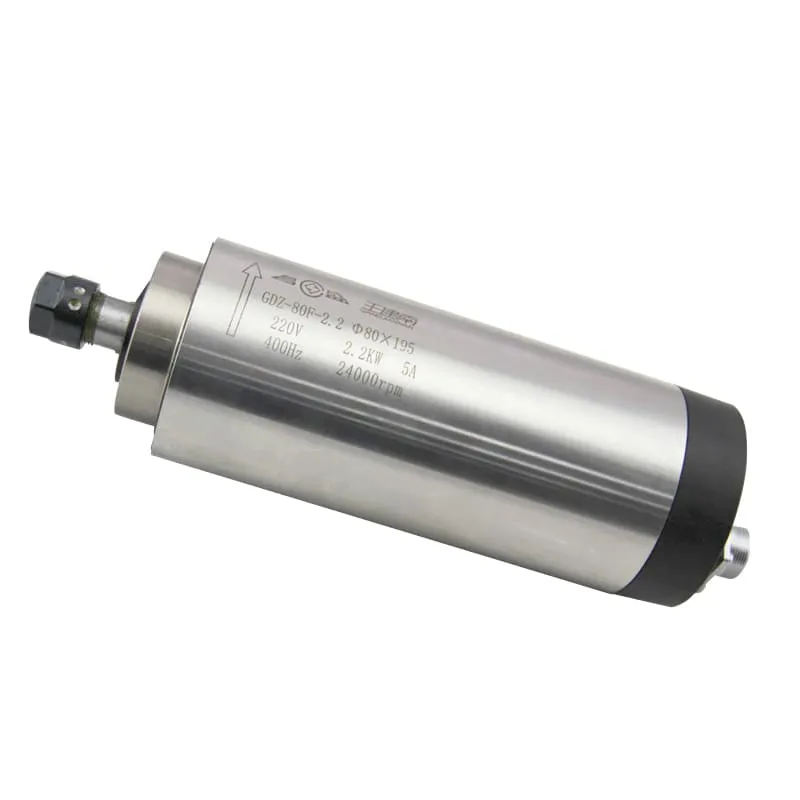How Deep Can a CNC Router Cut?
The cutting depth of a CNC (Computer Numerical Control) router is a crucial factor in determining the machine’s capabilities and the types of projects it can handle. This comprehensive guide will explore the factors that influence cutting depth, typical depth ranges for different materials, and considerations for achieving optimal cutting results.
Factors Affecting Cutting Depth
Several factors determine how deep a CNC router can cut:
- Router Power: The spindle’s power output
- Bit Type and Size: Different bits have varying cutting depths
- Material Being Cut: Softer materials allow for deeper cuts
- Machine Rigidity: Stiffer machines can handle deeper cuts
- Feed Rate: Slower feed rates often allow for deeper cuts
- Cutting Strategy: Single-pass vs. multi-pass cutting

A CNC router capable of various cutting depths
Typical Cutting Depths for Different Materials
Cutting depths can vary significantly based on the material:
Wood
- Softwoods: Up to 1 inch (25.4 mm) per pass
- Hardwoods: 0.5 to 0.75 inches (12.7 to 19 mm) per pass
- MDF/Plywood: 0.5 to 0.75 inches (12.7 to 19 mm) per pass
Plastics
- Acrylic: 0.125 to 0.25 inches (3.175 to 6.35 mm) per pass
- PVC: 0.125 to 0.1875 inches (3.175 to 4.76 mm) per pass
Soft Metals
- Aluminum: 0.0625 to 0.125 inches (1.59 to 3.175 mm) per pass
- Brass: 0.03125 to 0.0625 inches (0.79 to 1.59 mm) per pass
Composites
- Carbon Fiber: 0.0625 to 0.125 inches (1.59 to 3.175 mm) per pass
- Fiberglass: 0.125 to 0.25 inches (3.175 to 6.35 mm) per pass
Spindle Power and Cutting Depth
The power of the spindle significantly affects cutting depth:
- Low-Power Spindles (1-2 kW):
- Suitable for shallow cuts in soft materials
- Typical maximum depth: 0.5 inches (12.7 mm) in wood
- Medium-Power Spindles (2-3 kW):
- Can handle deeper cuts in wood and light metals
- Example: 2.2KW ER20 Air-Cooled Spindle
- Typical maximum depth: 1 inch (25.4 mm) in wood
- High-Power Spindles (3+ kW):
- Capable of deep cuts in hard materials
- Example: 3.5KW ER20 Air-Cooled Spindles
- Can achieve depths of 1.5 inches (38.1 mm) or more in wood
Cutting Bit Considerations
The choice of cutting bit greatly influences achievable depth:
- Straight Bits:
- Versatile for various depths
- Typically used for depths up to bit length
- Spiral Upcut Bits:
- Excellent for deep pocketing
- Can achieve depths up to 3 times bit diameter
- Compression Bits:
- Good for through-cuts in sheet materials
- Cutting depth limited to bit length
- V-Bits:
- Used for engraving and shallow decorative cuts
- Typical depths of 0.125 to 0.25 inches (3.175 to 6.35 mm)
Strategies for Deep Cutting
When deeper cuts are required:
- Multi-Pass Cutting:
- Make several passes, increasing depth each time
- Reduces stress on the bit and machine
- Step-Down Approach:
- Gradually step down in a spiral pattern for deep pockets
- Maintains bit engagement and chip evacuation
- Roughing and Finishing Passes:
- Use a larger bit for rough material removal
- Follow with a finishing pass using a smaller bit
- Climb Cutting:
- Can allow for slightly deeper cuts in some materials
- Use with caution as it can be less stable
Machine Considerations for Deep Cutting
The CNC router’s construction affects its deep-cutting capabilities:
- Frame Rigidity:
- Stiffer frames allow for deeper cuts without vibration
- Look for solid steel or heavy aluminum construction
- Gantry Stability:
- A stable gantry maintains accuracy in deep cuts
- Dual-drive systems can improve stability
- Z-Axis Travel:
- Ensure sufficient Z-axis travel for your desired depth
- Consider clearance for tool changes and material thickness
- Cooling System:
- Adequate cooling is crucial for deep cutting
- Air-cooled spindles may struggle with prolonged deep cuts
Safety Considerations for Deep Cutting
Deep cutting poses additional safety concerns:
- Chip Evacuation:
- Ensure proper chip removal to prevent recutting and overheating
- Use compressed air or vacuum systems
- Dust Collection:
- Deep cuts generate more dust and debris
- Implement effective dust collection systems
- Workpiece Securing:
- Use robust clamping for deep cuts to prevent movement
- Consider vacuum tables for large sheet materials
- Personal Protective Equipment (PPE):
- Use appropriate eye and ear protection
- Respiratory protection may be necessary for certain materials
Optimizing CNC Router for Deep Cuts
To achieve the best results in deep cutting:
- Maintain Sharp Bits:
- Regularly sharpen or replace cutting bits
- Dull bits generate more heat and require more force
- Optimize Feed Rates:
- Adjust feed rates based on material and depth
- Slower feeds are typically necessary for deeper cuts
- Implement Proper Cooling:
- Use coolant or compressed air for heat management
- Consider upgrading to a water-cooled spindle for intensive work
- Regular Machine Maintenance:
- Keep the machine well-lubricated and aligned
- Check for any play in bearings or guide rails
Limitations and Alternatives
When a CNC router’s depth capacity is insufficient:
- Multiple Setups:
- Flip the workpiece to cut from both sides
- Requires precise alignment between setups
- Specialized Bits:
- Extra-long bits can increase depth capacity
- Use with caution due to increased deflection risk
- Alternative Machines:
- Consider a CNC mill for very deep cuts in hard materials
- Vertical machining centers offer greater depth capabilities
FAQ
1. Can a CNC router cut all the way through a material?
Yes, CNC routers can make through-cuts, but the maximum thickness depends on the machine’s Z-axis travel and the length of the cutting bit.
2. How does cutting depth affect the lifespan of the router bit?
Deeper cuts generally lead to faster bit wear due to increased heat and stress. Using appropriate speeds and feeds can help prolong bit life.
3. Is it better to make one deep cut or multiple shallow cuts?
Multiple shallow cuts are generally preferred as they reduce stress on the bit and machine, improve cut quality, and allow for better chip evacuation.
4. How does material hardness affect cutting depth?
Harder materials typically require shallower cuts per pass to prevent excessive tool wear and maintain cut quality.
5. Can increasing spindle speed allow for deeper cuts?
While higher spindle speeds can sometimes allow for slightly deeper cuts, they also generate more heat. It’s crucial to balance speed with feed rate and cutting depth.
6. How do I determine the maximum safe cutting depth for my CNC router?
Start with the manufacturer’s recommendations, then perform test cuts, gradually increasing depth while monitoring cut quality, machine stability, and tool wear.
Conclusion
The cutting depth capability of a CNC router is a critical factor in its versatility and effectiveness. While the maximum achievable depth depends on various factors including spindle power, bit selection, and material properties, understanding these elements allows operators to optimize their machines for deeper and more efficient cutting.
By carefully considering the interplay between cutting depth, feed rates, and material characteristics, CNC router operators can push the boundaries of what’s possible with their machines. Whether working with wood, plastics, or soft metals, the key to successful deep cutting lies in a balanced approach that prioritizes both productivity and machine longevity.
As CNC technology continues to evolve, we can expect to see routers capable of even greater cutting depths and efficiencies. However, the fundamental principles of material science, tool dynamics, and machine kinematics will always play a crucial role in determining the practical limits of cutting depth.
For professionals and hobbyists alike, mastering the art of deep cutting with a CNC router opens up new possibilities in product design, manufacturing, and artistic expression. By applying the knowledge and strategies outlined in this guide, you can confidently tackle a wider range of projects, pushing your CNC router to its full potential while maintaining safety and quality standards.
Remember, the journey to achieving optimal cutting depths is one of continuous learning and experimentation. Stay curious, keep refining your techniques, and don’t hesitate to push the boundaries of what your CNC router can do – always with an eye on safety and quality.

